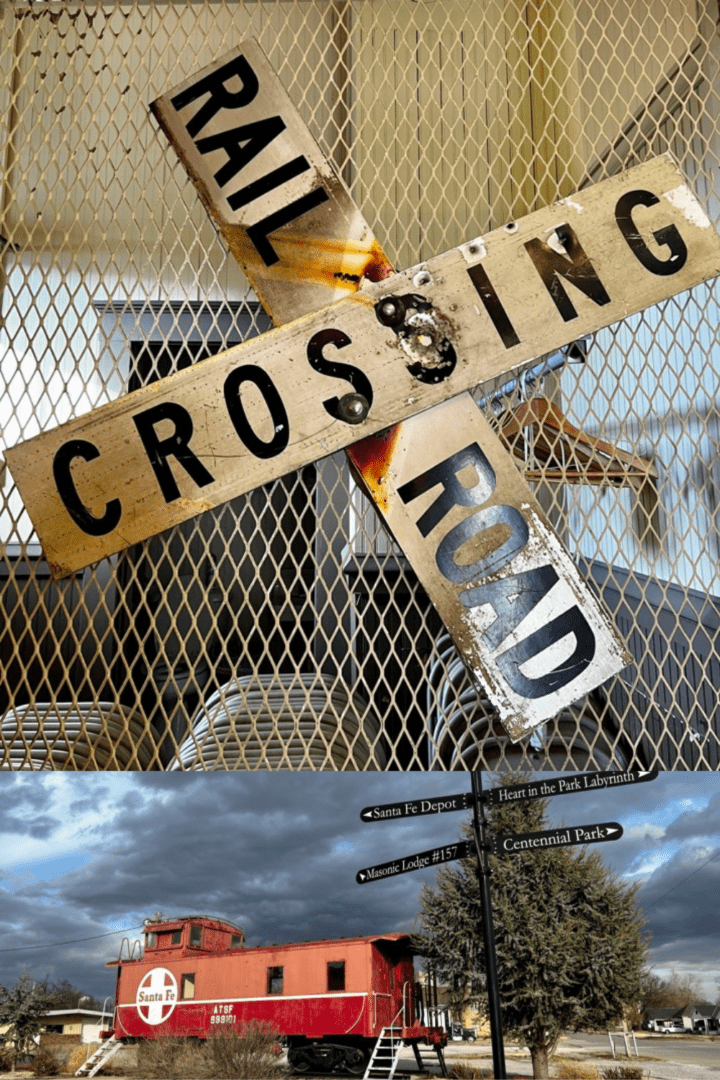RV travel is a great way to see the country, travel comfortably, and not leave our two dogs behind. Thanks to the convenience of our RV, we have discovered even more small towns in Oklahoma.
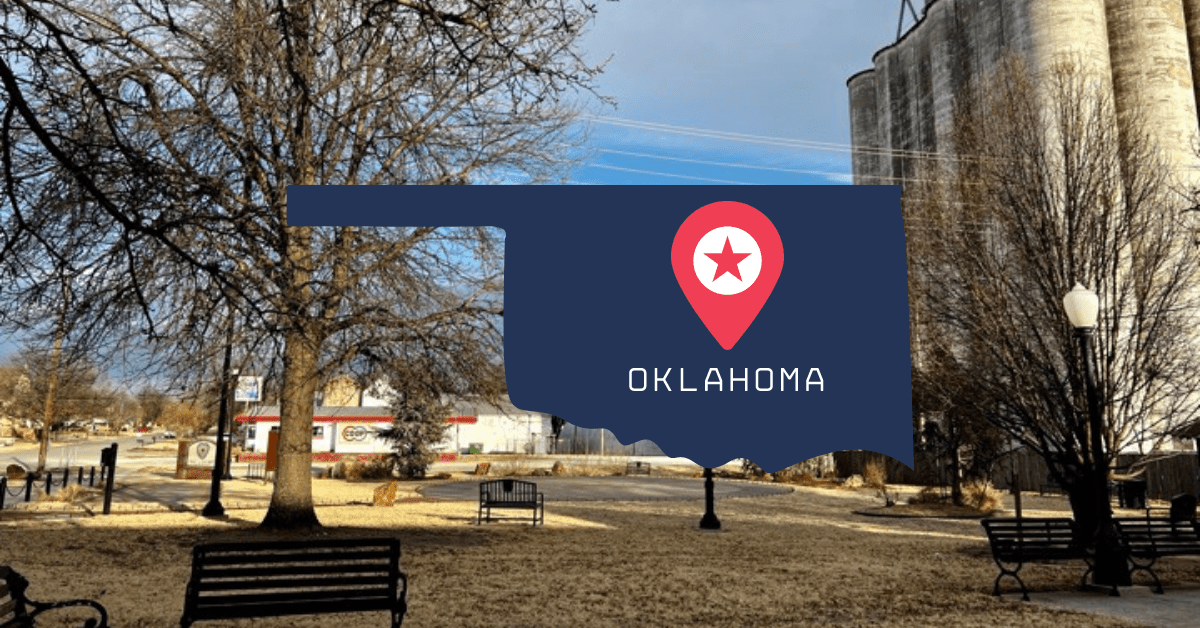
I hope you enjoy these stories about our discoveries in more small towns in Oklahoma. I would love to get your feedback in the comments section at the end of the post. Have you visited these museums before?
Tonkawa
Our first stop on this trip is Tonkawa. Named for the Tonkawa Indians who inhabited the area before European contact, Tonkawa is the county seat of Kay County and has a population of less than 3,000.
Tonkawa was claimed in the Oklahoma Land Run in 1983 and founded in March 1894. I read that the accepted translation of Tonkawa is “they all stay together.”
Tonkawa Casino RV Park
We made the Tonkawa Casino RV Park, next to the Tonkawa Hotel and Casino, our home base for a few days. The Park has eighteen pull-thru RV spots with full hookups on concrete pads and reasonable overnight prices, and it was a perfect location for us.
We spent some time in the Casino and had a great time. We gambled and enjoyed a meal from the Hub Food Truck inside the Casino. We also enjoyed a very unusually served beer using a Bottoms Up Draft Beer System. I have never seen this system before. Have you?
McCarter Museum of Tonkawa History
The McCarter Museum of Tonkawa History is located in the center of Tonkawa, Oklahoma, in a building purchased by the Tonkawa Historical Society in 1997. It is a great place to learn about Oklahoma’s fascinating history.
Much to our dismay, we discovered a closed sign on the Museum’s door as we approached it. However, we were delighted and amazed when the amazing Russ Burger opened the door and invited us inside to tour the Museum! This kind gentleman taught us all about the fascinating history of Tonkawa.
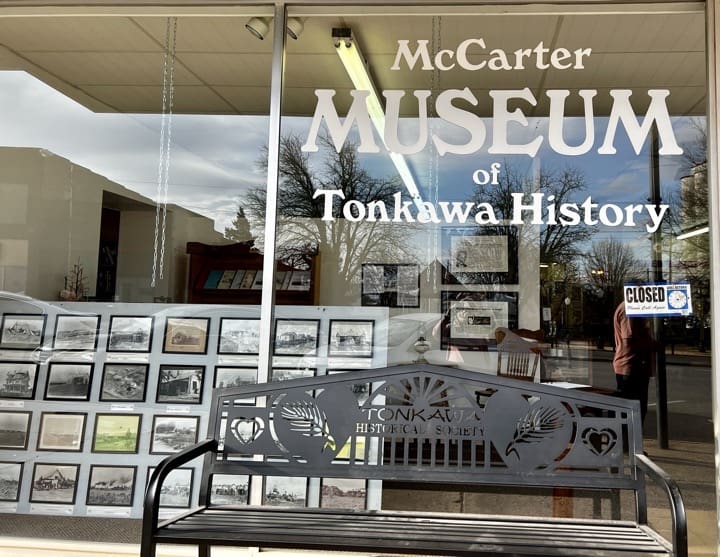
This Museum contains a wide variety of exhibits and tells the history of Tonkawa through a gallery of photos. A medical collection, newspaper office, military room, Depression-era kitchen, and country church are only a few of the exhibits on display here.
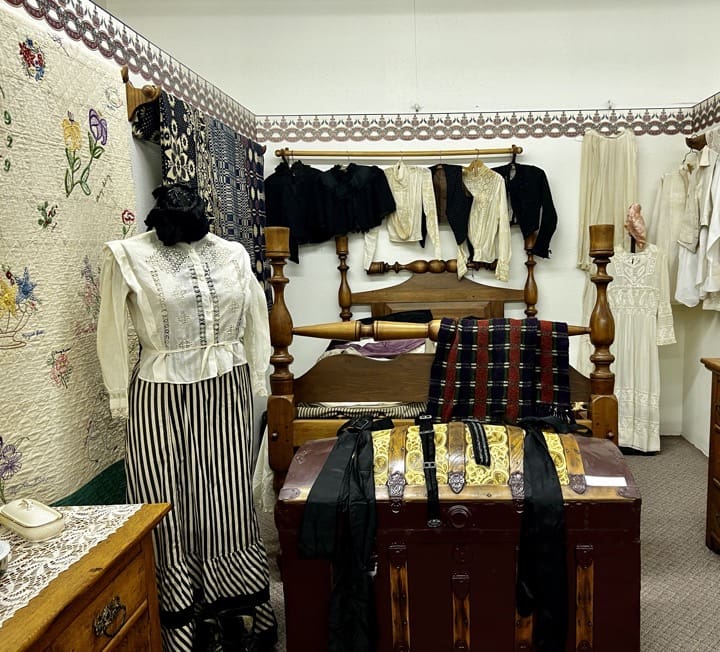
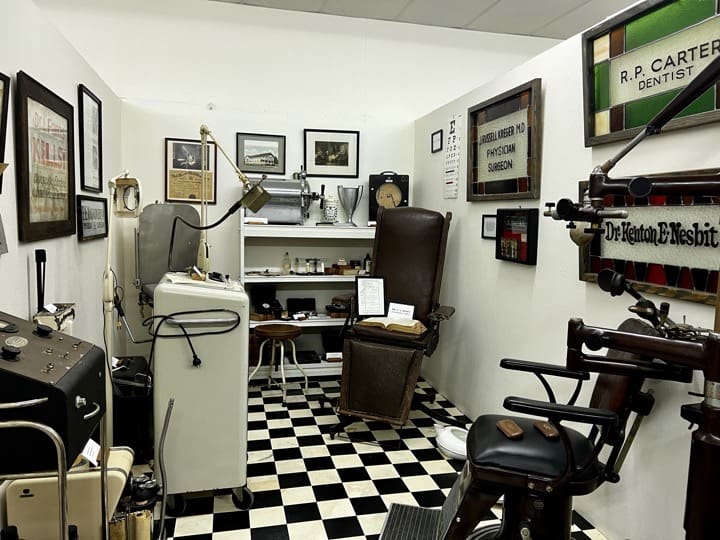

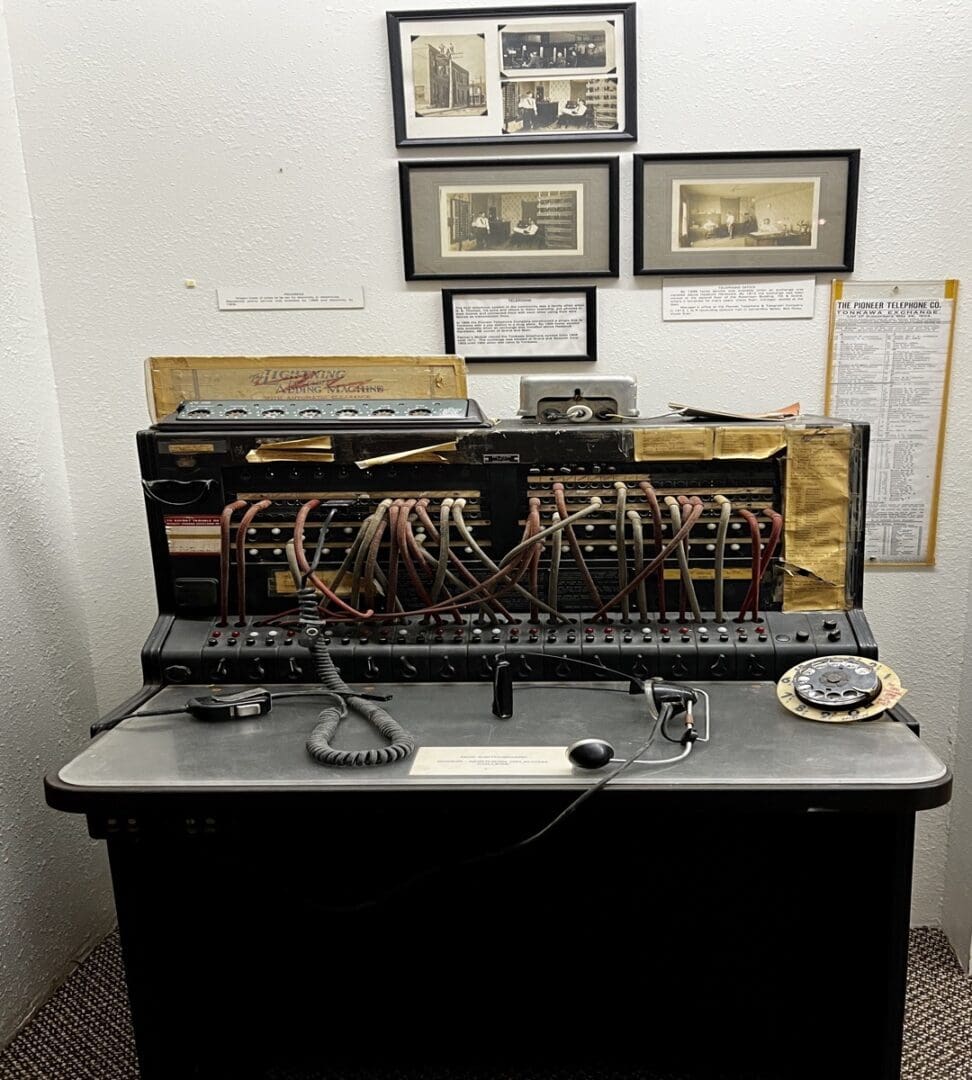
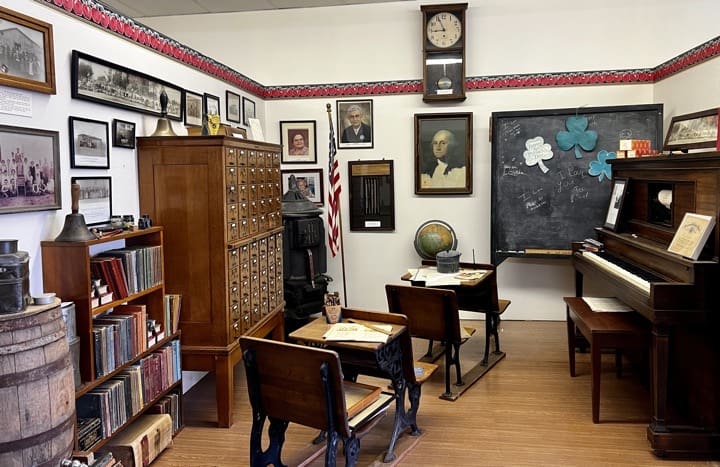
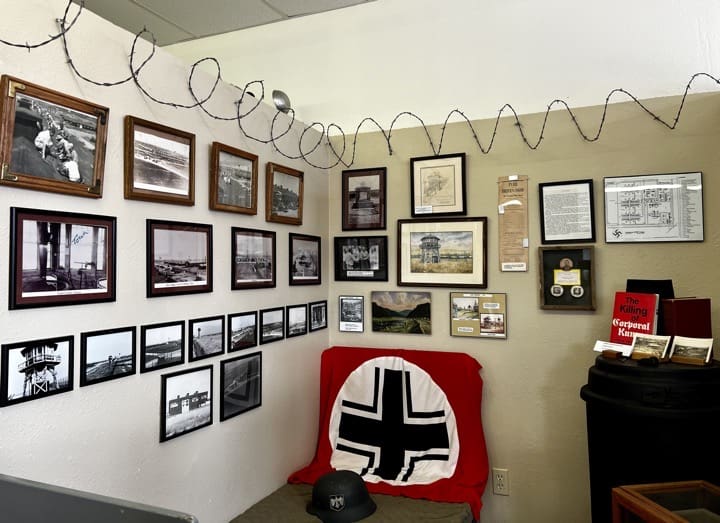
Did you know that there were six main war prisoner camps and at least 24 branch prisoners of war camps in Oklahoma at one time during World War II? I had no idea! One excellent exhibit room that tells this story is the World War II German Prisoner of War Camp exhibit.
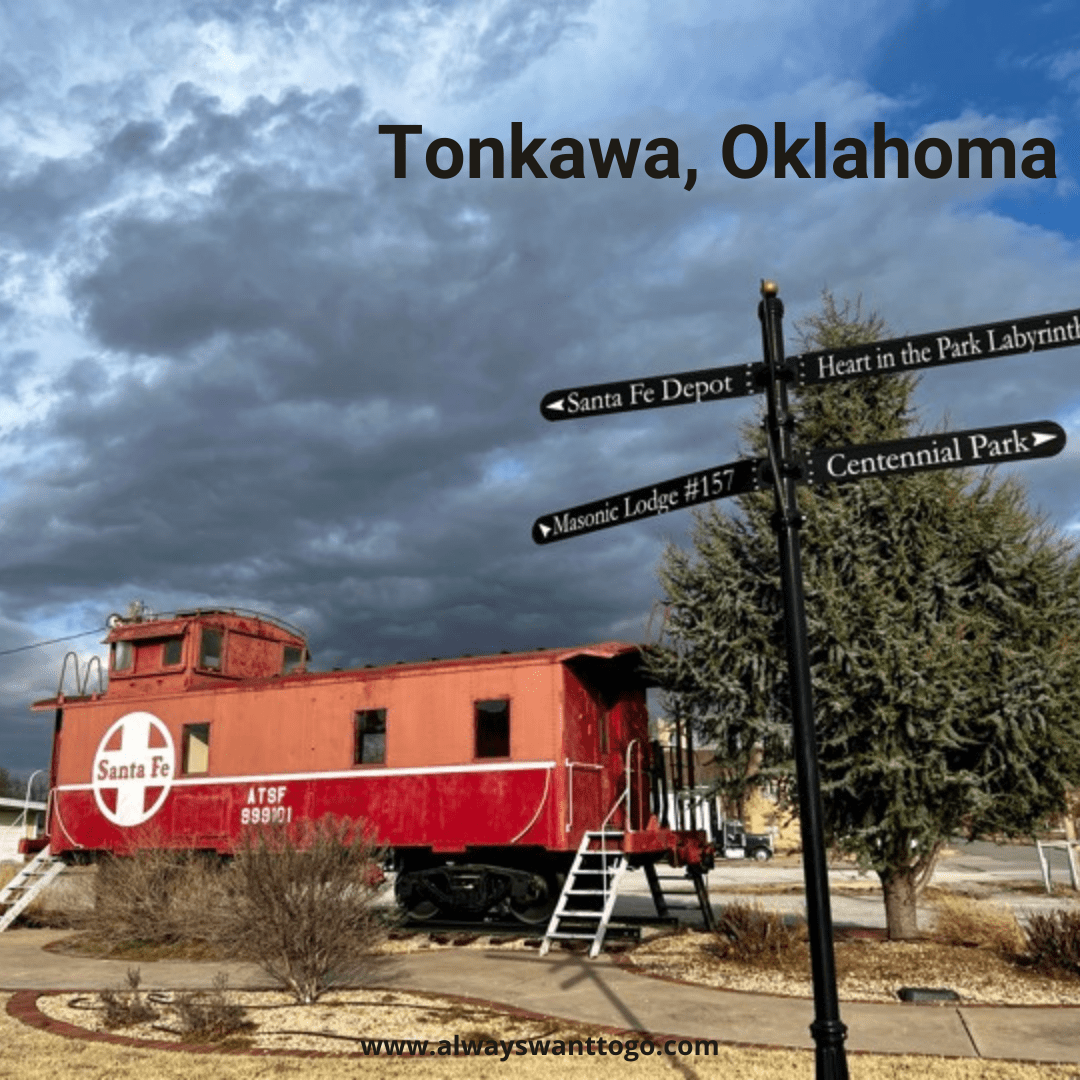
Tonkawa’s train depot. Today, it is an event and community gathering center.
Camp Tonkawa Prisoner of War Camp
During the War, the 160-acre Camp Tonkawa had more than 180 wooden structures to house 3,000 German POWs. The POW Camp also housed 500 US Army guards and employees. Nothing remains of the POW Camp today except a memorial marker placed where the entrance to the camp once was.

In 1943, Camp Tonkawa began housing German prisoners captured in North Africa and remained at near-total capacity throughout the War. The prisoners worked daily at nearby farms and the alfalfa plant in Tonkawa.
That same year, a German soldier, Johannes Kunze, was discovered by his fellow prisoners to be a spy. His fellow prisoners retaliated by beating Kunze to death! These prisoners were tried and hanged for their crimes.
You can read about this story in Vincent S. Green’s book, Extreme Justice: The True Story of Murder in an American POW Camp.
Centennial Park
Centennial Park, created in 1993 and 1994 across the street from the McCarter Museum, was built to commemorate the opening of the Cherokee Outlet a hundred years earlier, in 1893, and the founding of Tonkawa in 1894.

One of the most extraordinary things about this Park is this sculpture. If you stand away from it, the opening makes a perfect heart shape.
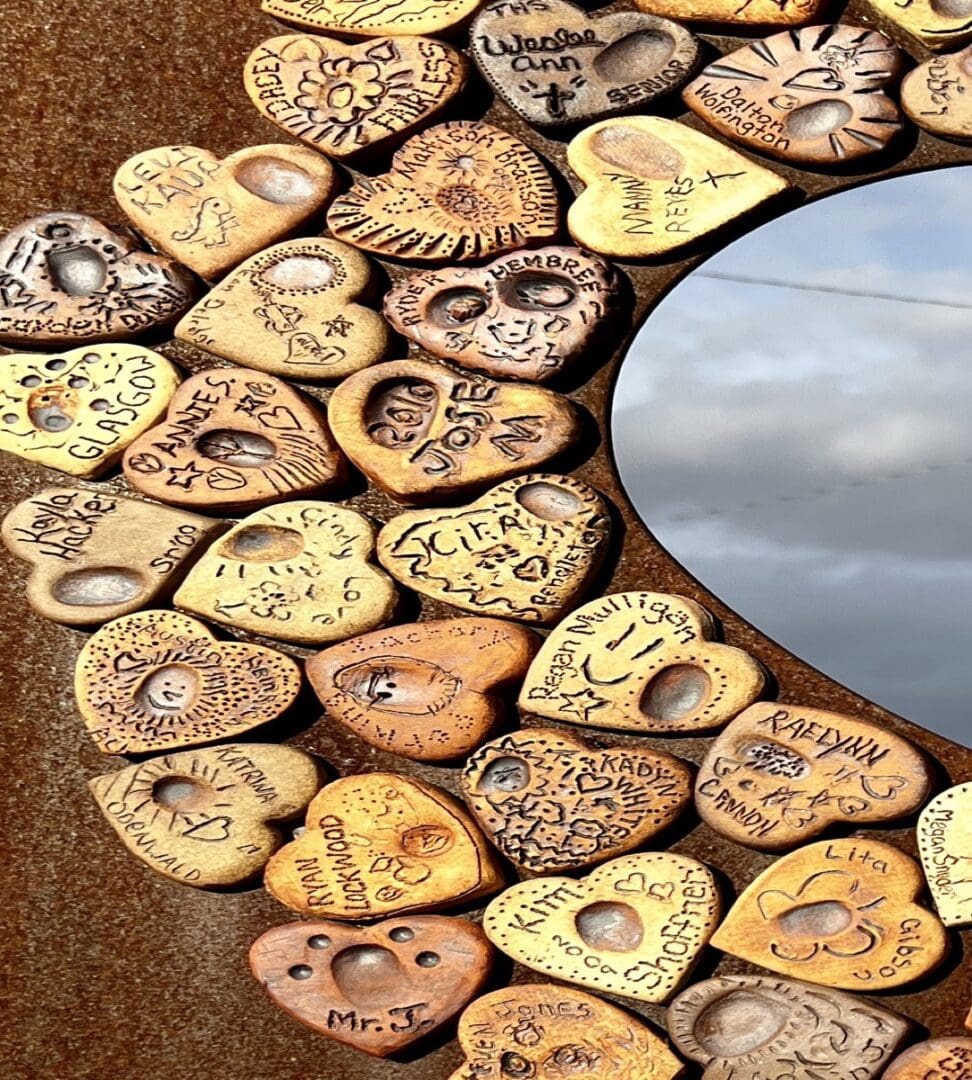
When you walk up close to the sculpture, you can see the many tokens affixed to it are clay hearts with grade school children’s thumbprints surrounded by their names and the art they created.
Heart in the Park Labyrinth
Tonkawa’s Beautiful Heart in the Park Labyrinth is the world’s first heart-shaped labyrinth!
The labyrinth is a peaceful place to walk, reflect, meditate, and pray. Local graduating classes have incorporated a walk through the labyrinth into their graduation ceremony.

Tonkawa’s motto is “Wheatheart of Oklahoma.” Local artist Audry Schmitz used a single wheat stalk imprinted on the pausing stone of this heart-shaped labyrinth and surrounded it with a historical timeline of Tonkawa.

Top of Oklahoma Historical Museum
The Top of Oklahoma Historical Museum is in a spectacular building that opened on Easter Sunday in 1913 as an event and community center. Its dome was electrically lighted and could be seen for miles when lit. This building was the first in the County to have electricity.
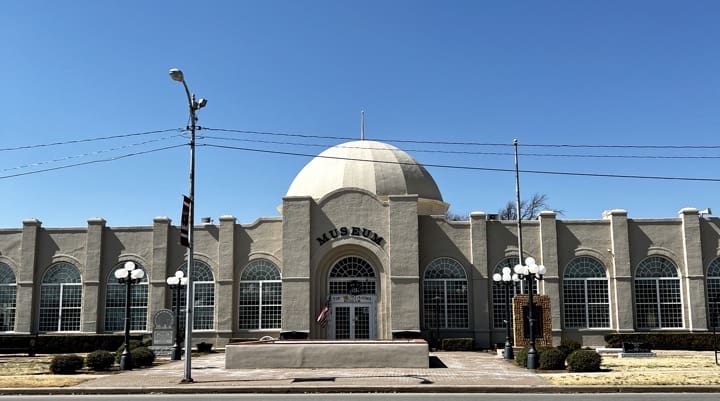
Originally known as the Electric Park Pavillion, this building is on the National List of Historic Places and was refurbished and turned into a museum in 1972. It is overflowing with history and stories about Blackwell, Oklahoma.
One side of the Museum contains the history of Oklahoma’s land run and local businesses. Hazel Atlas Glass was one of the biggest industries in Blackwell at the time. One of the glass items this plant manufactured was canning jars.

Hazel Atlas had a glass plant in Blackwell and one in Ada. Today, the initial on the bottom of a glass jar can tell where it was manufactured. Interesting, huh?
Hazel Atlas Glass ceased to exist when it and other businesses suffered significant damage during a 1955 tornado in Blackwell and decided not to rebuild.
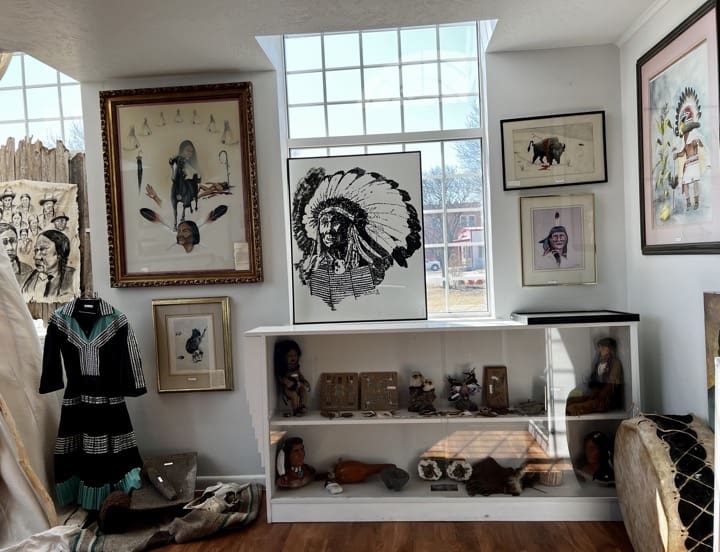
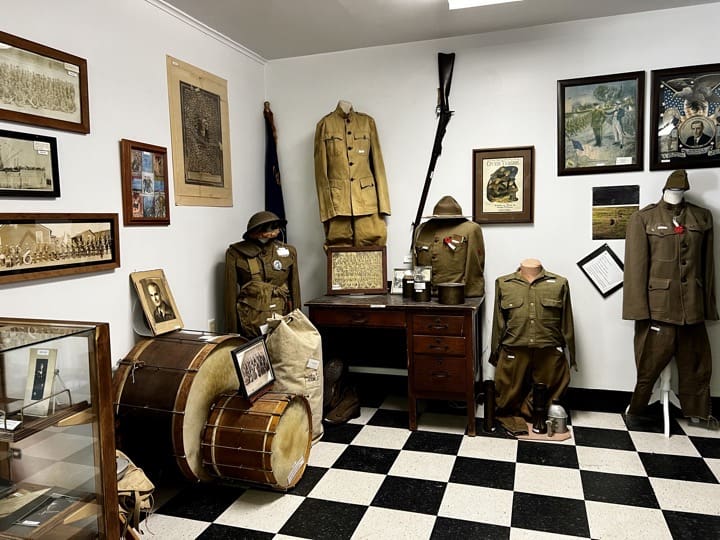
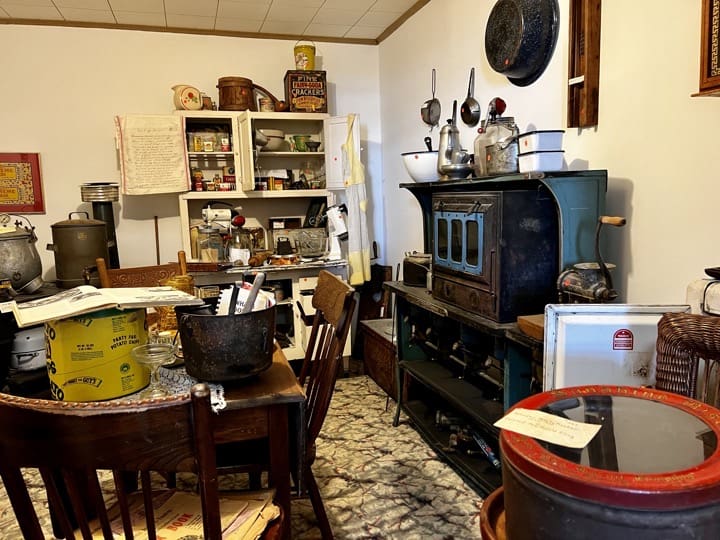


The Museum contains memorabilia from the 1893 Cherokee Strip Land Run to today. Exhibits include a military room, a Native American room, and period rooms filled with antiques that display life in Blackwell in the 1900s.

A fun and informative train exhibit donated by the family of Leroy Jacks from his Derailed Railroad Company Museum is on display here.
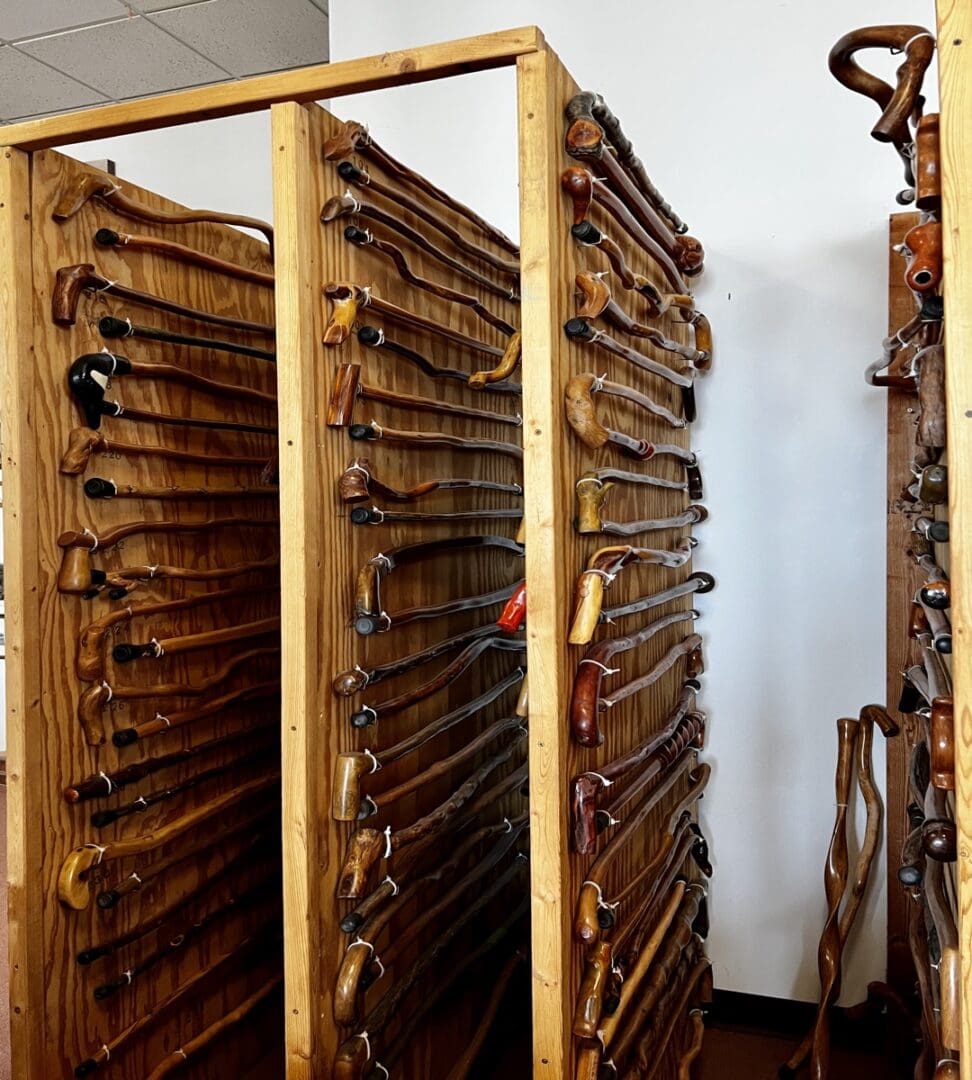
One extraordinary exhibit is a cane exhibit of several walking canes made and donated by Charles Elmore Heizer of Nuevo, California, in 2001. A written legend tells what kind of wood it is made of, where it came from, and when Mr. Heizer made it.
Other unusual exhibits here are stained glass windows from the local Christian Church. The windows depict Frances Willard, a famous educator and leader for women’s rights.
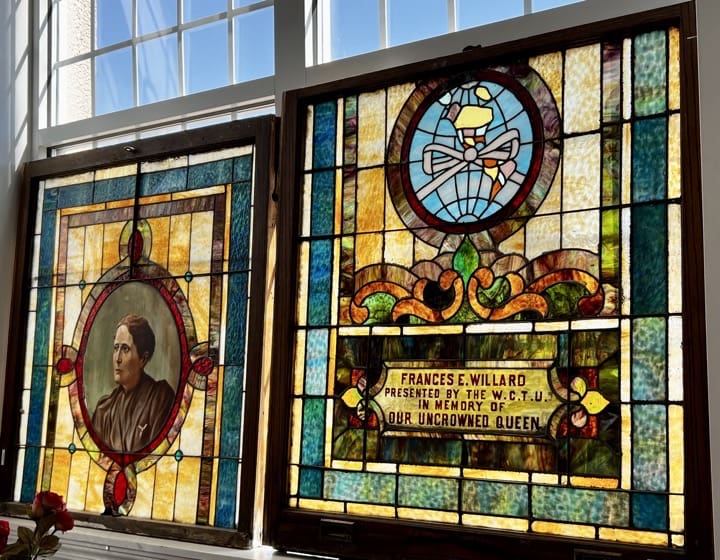
An entire tornado room contains exhibits from Blackwell’s horrific 1995 tornado. After causing significant damage in Blackwell, the tornado reformed and hit Udall, Kansas, as an F-5 storm.
I hope these history stories in still more small towns in Oklahoma may encourage you to take a little journey to Oklahoma and check out some of these Museums. Steve and I still have many more places to see and discoveries to make.
